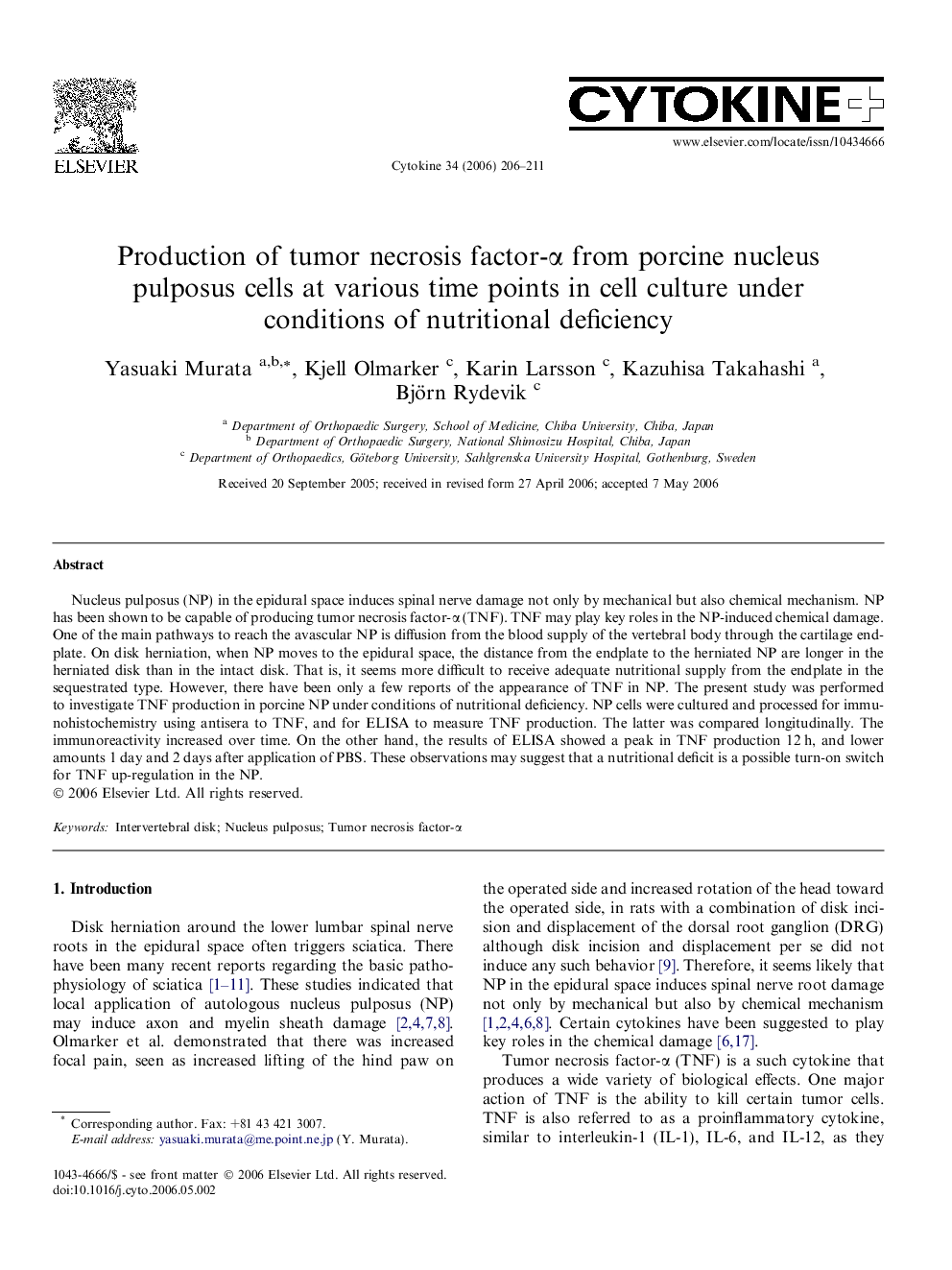| Article ID | Journal | Published Year | Pages | File Type |
|---|---|---|---|---|
| 2796038 | Cytokine | 2006 | 6 Pages |
Nucleus pulposus (NP) in the epidural space induces spinal nerve damage not only by mechanical but also chemical mechanism. NP has been shown to be capable of producing tumor necrosis factor-α (TNF). TNF may play key roles in the NP-induced chemical damage. One of the main pathways to reach the avascular NP is diffusion from the blood supply of the vertebral body through the cartilage endplate. On disk herniation, when NP moves to the epidural space, the distance from the endplate to the herniated NP are longer in the herniated disk than in the intact disk. That is, it seems more difficult to receive adequate nutritional supply from the endplate in the sequestrated type. However, there have been only a few reports of the appearance of TNF in NP. The present study was performed to investigate TNF production in porcine NP under conditions of nutritional deficiency. NP cells were cultured and processed for immunohistochemistry using antisera to TNF, and for ELISA to measure TNF production. The latter was compared longitudinally. The immunoreactivity increased over time. On the other hand, the results of ELISA showed a peak in TNF production 12 h, and lower amounts 1 day and 2 days after application of PBS. These observations may suggest that a nutritional deficit is a possible turn-on switch for TNF up-regulation in the NP.
